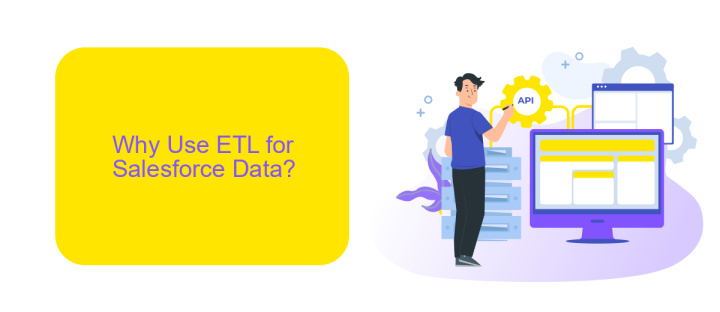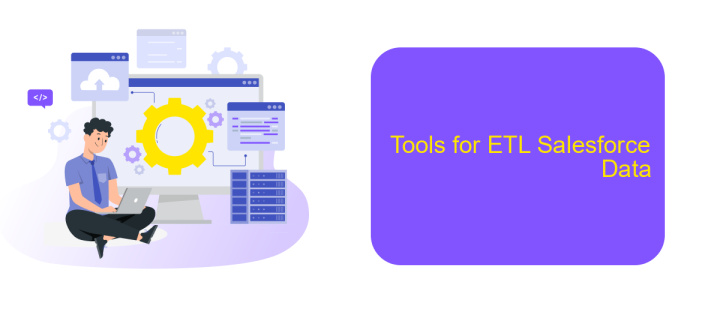ETL Salesforce Data Warehouse
In today's data-driven world, businesses rely on efficient data management to make informed decisions. ETL (Extract, Transform, Load) processes are crucial for integrating data from various sources into a Salesforce Data Warehouse. This article explores the importance of ETL in streamlining data workflows, enhancing data quality, and enabling powerful analytics within the Salesforce ecosystem.
ETL Salesforce Data to Data Warehouse Overview
ETL (Extract, Transform, Load) is a critical process for integrating Salesforce data into a data warehouse. This process enables businesses to consolidate, analyze, and derive insights from their Salesforce data alongside other data sources. The ETL process involves extracting data from Salesforce, transforming it to fit the data warehouse schema, and loading it into the data warehouse.
- Extraction: Pulling raw data from Salesforce, including leads, accounts, opportunities, and custom objects.
- Transformation: Cleaning and converting the extracted data into a consistent format that aligns with the data warehouse structure.
- Loading: Inserting the transformed data into the data warehouse for further analysis and reporting.
To streamline this process, services like ApiX-Drive can be utilized to automate the integration between Salesforce and the data warehouse. ApiX-Drive offers a user-friendly interface to set up and manage data flows without extensive coding, ensuring that your data is always up-to-date and accessible for decision-making. By leveraging such tools, businesses can save time and reduce the complexity of maintaining their data pipelines.
Why Use ETL for Salesforce Data?

ETL (Extract, Transform, Load) processes are essential for managing Salesforce data efficiently. By using ETL, organizations can extract data from Salesforce, transform it to fit their analytical needs, and load it into a data warehouse. This ensures that businesses have access to clean, consistent, and up-to-date data for reporting and analysis. ETL helps in integrating Salesforce data with other data sources, enabling comprehensive insights and better decision-making.
Moreover, using ETL tools like ApiX-Drive simplifies the integration process. ApiX-Drive allows seamless data transfer between Salesforce and various data warehouses, automating data workflows and reducing manual effort. With features like real-time data synchronization and customizable data mapping, ApiX-Drive ensures that your Salesforce data is always accurate and readily available for analysis. This not only saves time but also enhances data reliability and operational efficiency.
ETL Salesforce Data Warehouse Architecture

ETL architecture for Salesforce Data Warehouse involves extracting data from Salesforce, transforming it into a suitable format, and loading it into a data warehouse. This process ensures that data is clean, consistent, and ready for analysis.
- Extraction: Data is extracted from Salesforce using APIs or third-party tools like ApiX-Drive. This step involves pulling data from various Salesforce objects and tables.
- Transformation: The extracted data is then transformed to fit the schema of the data warehouse. This may include data cleaning, normalization, and aggregation.
- Loading: Finally, the transformed data is loaded into the data warehouse. This step ensures that the data is stored in an optimized format for querying and analysis.
Using a service like ApiX-Drive can simplify the integration process by providing pre-built connectors and automation features. This reduces the complexity of setting up and maintaining ETL processes, allowing organizations to focus on data analysis and decision-making.
Tools for ETL Salesforce Data

Extract, Transform, Load (ETL) processes are essential for integrating Salesforce data into a data warehouse. Choosing the right tools can significantly streamline this process, ensuring data accuracy and efficiency. Various tools cater to different ETL needs, from simple data migrations to complex transformations.
One popular tool is ApiX-Drive, which offers a user-friendly interface for setting up integrations between Salesforce and various data warehouses. It allows users to automate data flows without requiring extensive coding knowledge, making it accessible for businesses of all sizes. Additionally, ApiX-Drive provides real-time data synchronization, ensuring that your data warehouse is always up-to-date.
- ApiX-Drive: User-friendly, real-time synchronization
- Talend: Comprehensive ETL capabilities, open-source
- Informatica: Robust data integration, enterprise-grade
- Stitch: Easy-to-use, scalable data pipeline
- Fivetran: Automated data connectors, minimal maintenance
Each tool has its unique strengths, and the choice depends on your specific requirements, budget, and technical expertise. ApiX-Drive stands out for its simplicity and real-time capabilities, making it an excellent choice for businesses looking to streamline their ETL processes without heavy technical investments.
- Automate the work of an online store or landing
- Empower through integration
- Don't spend money on programmers and integrators
- Save time by automating routine tasks
Best Practices for ETL Salesforce Data
When implementing ETL processes for Salesforce data, it is crucial to prioritize data quality and consistency. Begin by thoroughly understanding the data schema and relationships within Salesforce. Regularly cleanse and validate data to prevent discrepancies and ensure accuracy. Utilize incremental data extraction methods to minimize load and improve efficiency. Scheduling data extraction during off-peak hours can also reduce system strain and enhance performance.
Leveraging integration services like ApiX-Drive can simplify the ETL process by automating data transfers between Salesforce and your data warehouse. ApiX-Drive offers a user-friendly interface to set up and manage integrations without extensive coding, making it easier to maintain data synchronization. Additionally, ensure robust error handling and monitoring mechanisms are in place to quickly identify and resolve any issues. Documenting the ETL process and maintaining detailed logs can facilitate troubleshooting and continuous improvement.
FAQ
What is ETL in the context of Salesforce Data Warehouse?
Why should I use a data warehouse with Salesforce?
What are the common challenges in integrating Salesforce with a data warehouse?
How can I automate the ETL process for Salesforce data?
What type of data can be extracted from Salesforce for a data warehouse?
Strive to take your business to the next level, achieve your goals faster and more efficiently? Apix-Drive is your reliable assistant for these tasks. An online service and application connector will help you automate key business processes and get rid of the routine. You and your employees will free up time for important core tasks. Try Apix-Drive features for free to see the effectiveness of the online connector for yourself.


